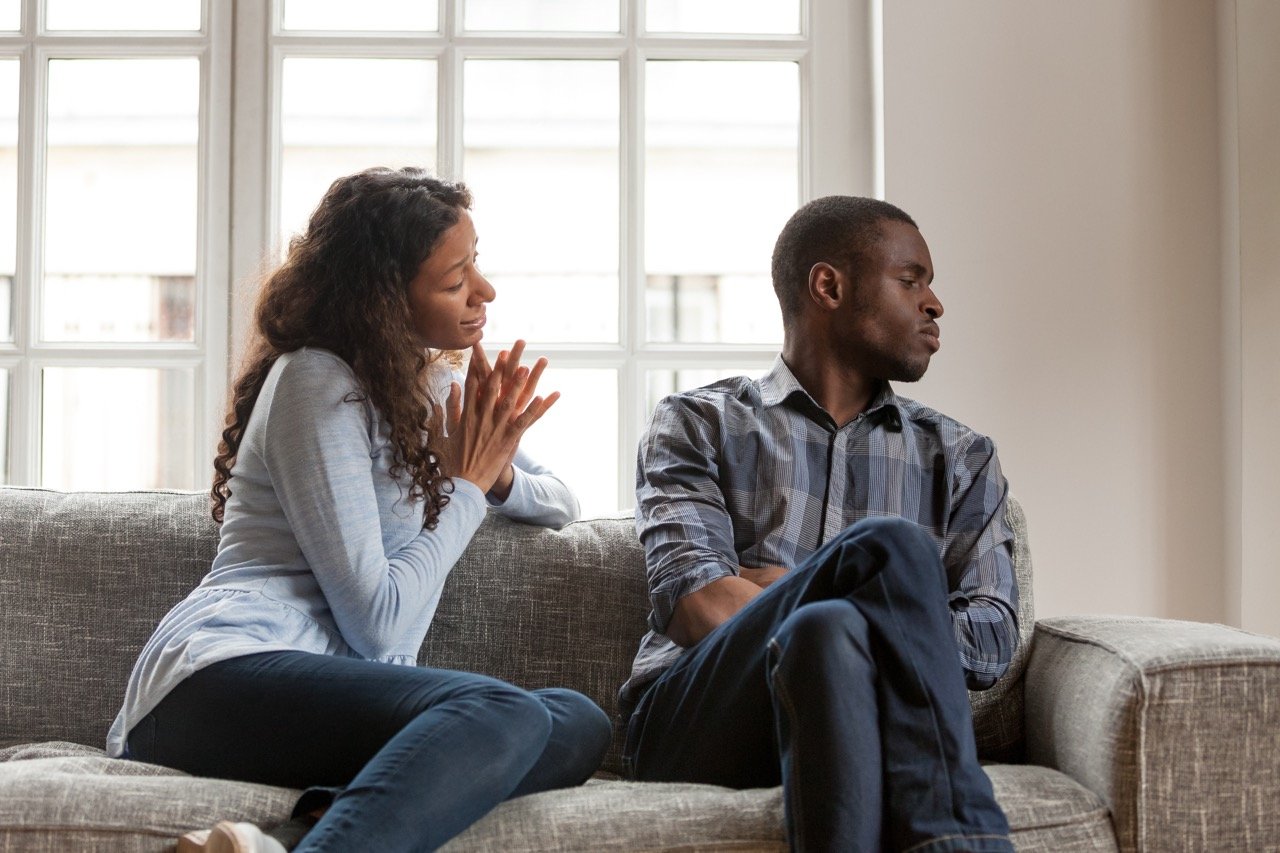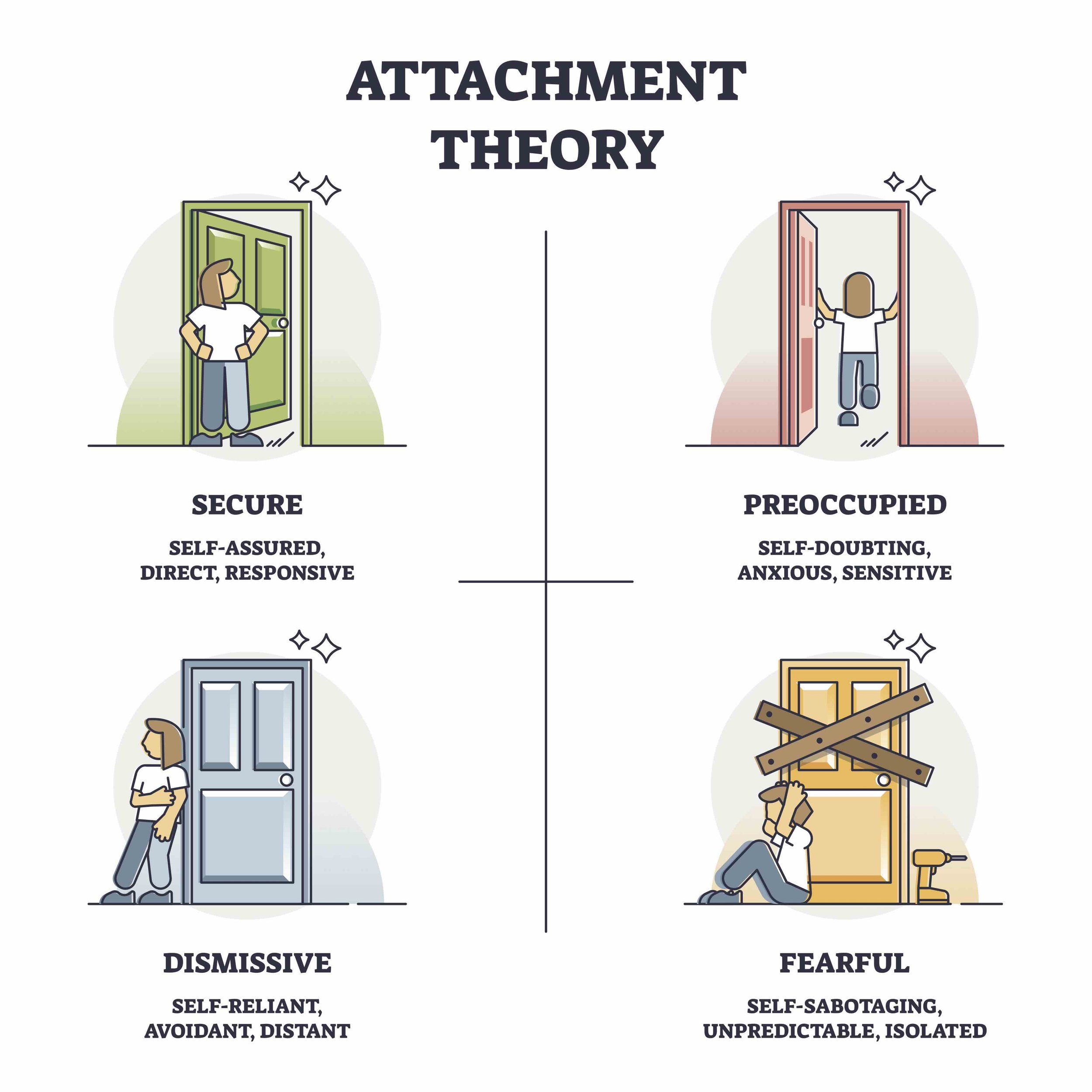How Anxious Attachment Impacts Dating and Relationships
An Anxious attachment style doesn’t mean you’re the only anxious one in the relationship, but it does come with certain challenges.
There are 4 attachment styles that describe how we connect and relate with other people. A person can have these different styles in varying quantities, but we usually have one primary attachment style. Here we’re going to talk about the Anxious Attachment Style, also called Anxious Ambivalent, Preoccupied, or a handful of other judgy sounding names. I’ll just call it anxious attachment, but just know that it is not the only attachment style that experiences anxiousness.
Besides anxious attachment, the other styles are called avoidant or dismissive attachment style, and disorganized or fearful attachment style. The last style is the secure attachment style, and researchers have correlated secure attachment style with relationships with happiness and longevity.
So how do you recognize the anxious attachment style? You can recognize traits of this style when someone fears their partner will pull away or abandon them. So if someone is consistently afraid of being abandoned and rejected, wants a lot of reassurance in relationships, and even when things are going well, they feel like they’re constantly waiting for the other shoe to drop and the person to disappoint them, these are traits of the anxious attachment style. People can spend a lot of time focused on relationships but still feel like they aren’t getting their needs met.
You might wonder why people have the attachment style that they do. So let’s talk briefly about how the anxious style is formed.
This particular attachment style happens when people don’t receive connection in a consistent and predictable way from caregivers. So many times parents are busy or have other siblings to attend to or they have their own attachment wounding. Our attachment style can also be affected by other people in our lives, like siblings or other important figures.
So in the anxious attachment style, the child sometimes got the connection and it was nice, good, loving connection, and other times the person wasn’t available. This can even happen when a baby is say in a crib and the parent comes when they’re crying sometimes but not other times. So there can be these little things that happen over time that just train our brain to expect or anticipate connection differently. When someone gets love intermittently or unpredictably, they tend to focus on it because love is survival when we’re very young. Or at least, attention is survival because that’s how we stay warm and fed. So there’s this external focus on the other person, making sure the connection is okay, we’re going to get our milk or bottle or hug or whatever we need.
Anxious attachment in dating
When someone with anxious attachment is dating, they move quickly into closeness and intimacy, and get preoccupied with trying to figure out if the other person likes them or is romantically interested and to what degree.
At the same time, when people give them too much interest, it can feel kind of overwhelming or not attractive, and they tend to attract people who are emotionally unavailable. You can see my post “Why do the Anxious and Avoidant Attachment Styles Attract Each Other?”
So there’s a lot of focus on the other person, trying to interpret what other people’s behavior means and trying to decide if the person is right for them as well as whether the person is interested in a committed relationship. And to top it off, since the Anxious and Avoidant styles do often attract, this becomes all the more of a challenge since the avoidant style may give ambiguous cues about how interested they are and for what level of commitment.
Overall people with anxious attachment can have a strong fear of rejection or not being liked in the dating process. The difference between this fear of rejection and the avoidant attachment style’s fear of rejection is that the anxious style will put themselves out there but then try to make themselves as lovable as possible and try to analyze how the other person feels about them, whereas the avoidant style is less comfortable taking risks that might result in rejection but won’t do as much obsessing about the other person’s behavior and what it means.
Anxious attachment in relationships
Once someone with anxious attachment is in a relationship, they can notice a few common patterns. One such pattern is that it’s hard to shift from time spent together to time spent alone. So for example, someone is dating but not living with their partner, and they only see their partner a couple times a week. Each time the person leaves, they feel a kind of stress that’s a bit more than just a transition of togetherness into aloneness; it can feel a bit like loss or even abandonment. The person might feel shaky, nervous, even panicky. This can happen because in the anxious attachment adaptation, people can become quite focused on the other person. There are reasons why this happens based on our early experiences of relationship, and of people who were there or not there for us.
Another pattern that’s really common in people with anxious attachment is feeling pre-occupied with the other person, what they’re feeling, needing, and wanting, and sometimes when we’re very absorbed with other people’s needs it gets in the way of being in touch with our own needs. Anxious attachment also comes with a bit of people pleasing, so sometimes people will find themselves in relationships that don’t feel reciprocal. Their partners might argue that they didn’t ask for everything that is being done for them. And when people are in non-reciprocal relationships where they’re doing more of the giving, they can sometimes become resentful, and the problem is when this comes out in passive aggressive ways. Like the person who sees their partner leave dirty cookware out on the stove and says, “Are you going to leave that there?” or “I’ll get that” in an aggravated tone, when what they mean is, “Can you clean that up because I cleaned up the last five times, and it’s not fair, and it’s your turn.”
People can also find that they are jealous of their partner’s time or resources - if not jealous of another person, then jealous that their partner’s work or hobbies gets a higher priority than they do. And this can also happen even more in the anxious avoidant trap.
It’s common for people to feel like they want to work through things, talk through issues, be sure that the relationship is okay, because these are all ways that they are assuring themselves and asking for reassurance that the relationship is stable and they won’t be abandoned. Fear of abandonment is at the heart of the anxious style. Although these behaviors have a positive intent, which is to ensure relationship stability, if they are delivered with an energy of demand or pressure, this can backfire. And especially if the anxiously attached person is in a relationship with an avoidantly attached person, they will likely push their partner away by trying to ask for reassurance. They might think of it as just wanting to get closer, like texting someone, “Do you love me?” But for another attachment style, this will be perceived as neediness. This kind of communication can make a partner who has a more avoidant style run for the hills.
How to recognize anxious attachment style in a partner or date
You can guess that you might be dating someone who is an anxious attacher if they regularly do many of the following: they initiate communication with you much more frequently than you do, they’re reluctant to end your time together even when you need to leave, they want to discuss and process disagreements you’ve had even when you don’t want to, they can be a bit cold or grumpy if you’ve had to be apart and then you come back together, and they want to know your schedule and how they fit into it. The difference between these behaviors and those exhibited by someone with secure attachment may be a difference of degree. For example, a secure person might be reluctant for you to leave because they’re enjoying spending time together, but they feel fine with it and respect your decision to leave, whereas an anxious attacher might try to prevent you from leaving, or let you leave but feel resentful or stressed out.
But guess what, there are some connection building traits that people with anxious attachment also bring to the relationship. Because they can be focused on others, they can also be empathetic and attuned, though it can be at their own expense. They’re in touch with their emotions, and they love connecting at a deep level.
How to change anxious attachment style
People start to wonder at this point if they are going to have a particular attachment style their whole life or if they can become more secure, and the answer is that yes, you can become more secure by recognizing your patterns, taking steps to change them, and rewiring in new ways of thinking and feeling. I teach people how to create corrective experiences that help the attachment system to experience security. In the case of anxious attachment style, this involves giving the attachment system the consistency and predictability it needs so that people can feel more safe and secure in connection. Learning to focus on what is going well and get in touch with our inner somatic knowing. It’s like, instead of waiting for the other shoe to drop, they can enjoy the feeling of the shoes on their feet.





